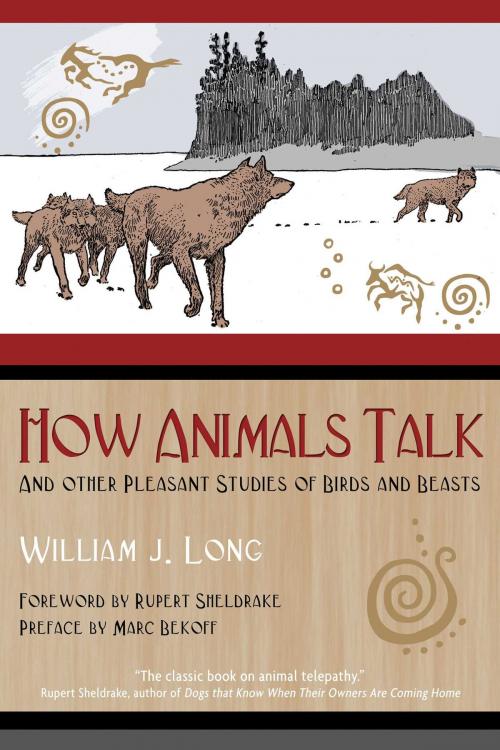How Animals Talk
And Other Pleasant Studies of Birds and Beasts
Nonfiction, Science & Nature, Nature, Animals, Wildlife, Religion & Spirituality, Occult, ESP, New Age| Author: | William J. Long, Marc Bekoff | ISBN: | 9781591438984 |
| Publisher: | Inner Traditions/Bear & Company | Publication: | August 23, 2005 |
| Imprint: | Bear & Company | Language: | English |
| Author: | William J. Long, Marc Bekoff |
| ISBN: | 9781591438984 |
| Publisher: | Inner Traditions/Bear & Company |
| Publication: | August 23, 2005 |
| Imprint: | Bear & Company |
| Language: | English |
The classic and original text that first explored the telepathic methods of communication of wild animals
• Based on years of detailed field observations, first published in 1919
• Written by the famous American naturalist who was the first to study telepathy in the wild
• Forewords by biologists Rupert Sheldrake, who has spent 15 years researching the unexplained powers of animals, and Marc Bekoff, the editor of the three-volume Encyclopedia of Animal Behavior
Many sources have commented on the silent communication abilities of pets, but never before and not since the first publication of this book in 1919 has the subject of animal telepathy in the wild been so fully researched. How Animals Talk explores the phenomenon of vocal, silent, and even motionless communication among animals. From crow talk to instant herd communication, author William J. Long theorizes that animals are much more intelligent, emotional, and moral than we have traditionally thought and that their ability to sense the presence of other living beings is an innate ability shared by humans as well. Based on many years of field observations, this classic text contains numerous examples of animal behavior that defy conventional explanation.
Long believed in the importance and validity of anecdotal evidence. He recognized the dangers of conventional research in reducing animals to mere numbers and how the cold third-person prose of scientific study can objectify animals, distancing "us" from "them." His findings on the impact of our presence on animal life--and the cost that we pay in separating ourselves from animals, who help define our place in the natural world--may be more relevant today than ever before.
The classic and original text that first explored the telepathic methods of communication of wild animals
• Based on years of detailed field observations, first published in 1919
• Written by the famous American naturalist who was the first to study telepathy in the wild
• Forewords by biologists Rupert Sheldrake, who has spent 15 years researching the unexplained powers of animals, and Marc Bekoff, the editor of the three-volume Encyclopedia of Animal Behavior
Many sources have commented on the silent communication abilities of pets, but never before and not since the first publication of this book in 1919 has the subject of animal telepathy in the wild been so fully researched. How Animals Talk explores the phenomenon of vocal, silent, and even motionless communication among animals. From crow talk to instant herd communication, author William J. Long theorizes that animals are much more intelligent, emotional, and moral than we have traditionally thought and that their ability to sense the presence of other living beings is an innate ability shared by humans as well. Based on many years of field observations, this classic text contains numerous examples of animal behavior that defy conventional explanation.
Long believed in the importance and validity of anecdotal evidence. He recognized the dangers of conventional research in reducing animals to mere numbers and how the cold third-person prose of scientific study can objectify animals, distancing "us" from "them." His findings on the impact of our presence on animal life--and the cost that we pay in separating ourselves from animals, who help define our place in the natural world--may be more relevant today than ever before.















